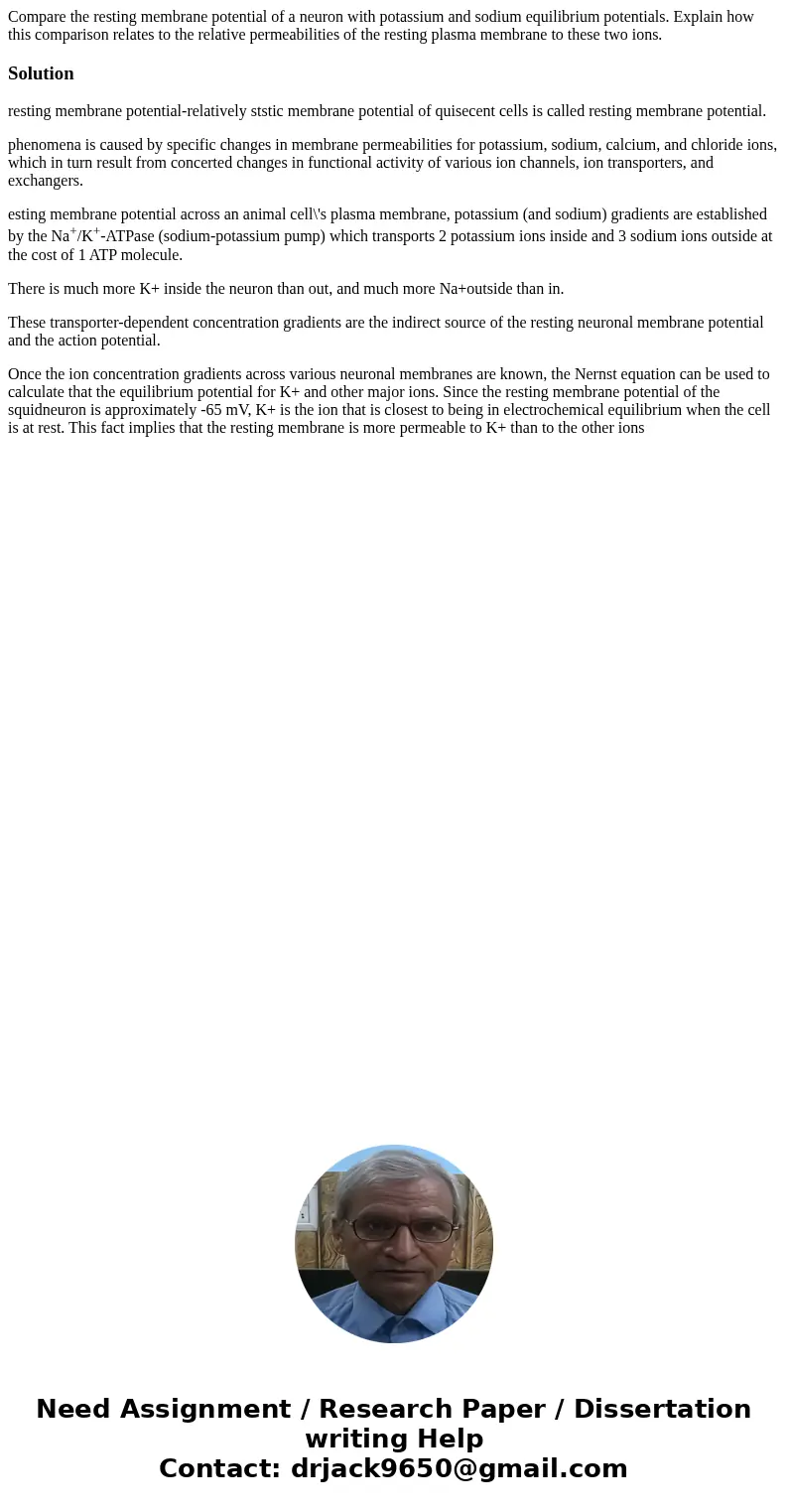Compare the resting membrane potential of a neuron with pota
Solution
resting membrane potential-relatively ststic membrane potential of quisecent cells is called resting membrane potential.
phenomena is caused by specific changes in membrane permeabilities for potassium, sodium, calcium, and chloride ions, which in turn result from concerted changes in functional activity of various ion channels, ion transporters, and exchangers.
esting membrane potential across an animal cell\'s plasma membrane, potassium (and sodium) gradients are established by the Na+/K+-ATPase (sodium-potassium pump) which transports 2 potassium ions inside and 3 sodium ions outside at the cost of 1 ATP molecule.
There is much more K+ inside the neuron than out, and much more Na+outside than in.
These transporter-dependent concentration gradients are the indirect source of the resting neuronal membrane potential and the action potential.
Once the ion concentration gradients across various neuronal membranes are known, the Nernst equation can be used to calculate that the equilibrium potential for K+ and other major ions. Since the resting membrane potential of the squidneuron is approximately -65 mV, K+ is the ion that is closest to being in electrochemical equilibrium when the cell is at rest. This fact implies that the resting membrane is more permeable to K+ than to the other ions

 Homework Sourse
Homework Sourse